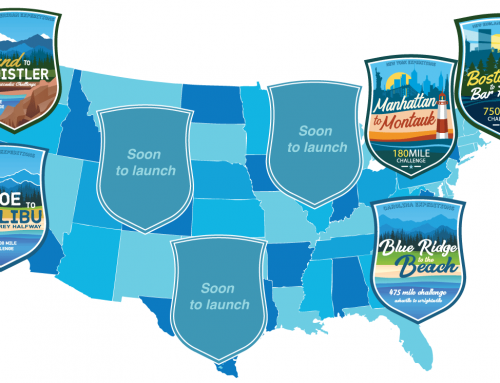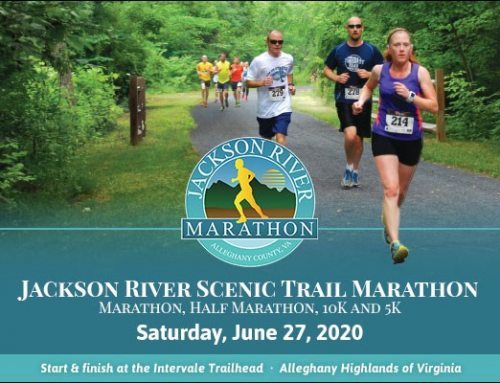By Kyle Cooper and Evan Adler
Dear Physical Therapist,
I am a runner and sometime-triathlete looking for a new challenge this year. My buddies and I have signed up for our first mud run and can’t wait to tackle this new hurdle, literally. I am writing because I am looking for some advice as far as my training is concerned. The race will have a lot of obstacles that involve pulling, climbing, crawling and other involvement of my arms that I am not used to. In the past, my training has included an endurance running, biking and swimming plan, but very little cross-training.
I have experienced some shoulder pain before when doing my long swims and after being on the bike for my long rides as well. The pain typically goes away after I rest for a bit, so I haven’t paid it too much attention. However, since I am going to need to pull myself over a cargo net and swing across a mud pit on a rope, I thought I should ask the experts about what I can do to make sure that my shoulders and arms are as strong as my legs and endurance.
Thanks for the help!
Muddy Marty
Dear Muddy Marty,
You are right, the challenges that you will encounter in the obstacle-course race will push your body in totally different ways from your previous endurance-based activities. It is great that you are thinking ahead and already planning for this event! Many individuals do not take into account the specific demands for these types of events and do not adjust their training adequately. As a physical therapist, I see these individuals every day for a variety of complaints after their event. I am happy to give you some advice to help you perform at a high level for this event and prevent injury.
Your history of endurance athletics will serve you well from a stamina standpoint, especially if you have picked a longer course, but you are going to need to broaden your training a great deal to prepare for this event. The first step of training appropriately for this new challenge is familiarizing yourself with the course. I would recommend gaining as much knowledge as possible about the course, including the total distance to be covered, the terrain, the distance between each obstacle, and the number and type of obstacles. Thoughtful training for a 10-mile event with 20 obstacles will vary greatly from a 3-mile race with eight obstacles. Course length and composition require varying amounts of anaerobic (power) and aerobic (endurance) metabolism, strength and neuromuscular coordination.
The broad range of physical tasks required for obstacle-course racing makes developing a comprehensive program challenging. Short of being on the course, there is nothing that will completely prepare you for the event, but you can combine a variety of strength training, cardio and activity-specific training to help you replicate the conditions and physical demands of your course. I can offer you a few suggestions on how to tailor your training appropriately based on the information you gave me.
Build a base of upper-body strength: With your history of recurrent shoulder pain I would probably start building a program focused on scapular and rotator-cuff strength and stability. There are many ways to approach this, but a series of prone Y’s, T’s, W’s and rotator-cuff strengthening is a good place to start. You can find a series of these exercises on our YouTube page (Proaxistherapy NorthCarolina). Eventually you can start to incorporate pull-ups, chin-ups and push-ups. These exercises, along with a broad-based upper-body strengthening program incorporating other functional movements, should help you tackle most obstacles on your course. If you encounter continued shoulder pain during your training, you should probably consult a physical therapist, who can perform a thorough evaluation to determine what factors you should focus on improving to reduce your risk of injury and improve performance.
Build your core: Enhanced core stability can improve performance in all activities and reduce the risk of injury. A properly conditioned core allows for smoother, better coordinated, and more efficient movements of the arms, legs and trunk. A basic series of core exercises includes front planks, side planks, bridging and progressive standing activities including lunges, squats and single-leg squats.
Add intervals and circuit training: Your course will likely mix running with obstacles. Interval training that mixes running at your desired pace with rounds of activities that simulate the demands of your course will help you meet the metabolic, strength and neuromuscular demands of the course. A sample training session might include a 1-mile run followed by 25 pull-ups, then another 1-mile run, ending with 50 push-ups.
Incorporate a dynamic warm-up: A good workout gets your body prepared for the demands of your activity, prevents injury and improves performance. Prior to your intervals, circuits and the actual event, pick a series of activities that works your entire body and gets your heart rate up. With your history of shoulder pain I would pay particular attention to warming up your shoulders.
With these suggestions you should be able to start tailoring your program toward your new goal. If you need additional guidance with your program or encounter problems during your training, consult a health-care provider who has experience with athletes training for these events, such as a physical therapist or athletic trainer.
Stay muddy, my friend, and enjoy the course!
# # #
Kyle Cooper, PT, DPT, is a physical therapist at Proaxis Therapy in Carrboro. He has had the pleasure of treating many different types of adult and pediatric athletes in the Carrboro and Chapel Hill community. He enjoys running, biking, kayaking, weightlifting and pretty much anything outside with family and friends. To learn more about Kyle or Proaxis Therapy, visit www.proaxistherapync.com.
Evan Adler, SPT, is in his last year of a doctoral program in physical therapy at Elon University. He is an avid runner and triathlete, and has recently competed in a half-Ironman. Evan enjoys treating athletes of all kinds but especially enjoys working with endurance athletes. He plans to pursue a job in outpatient orthopedics and sports medicine this spring.






